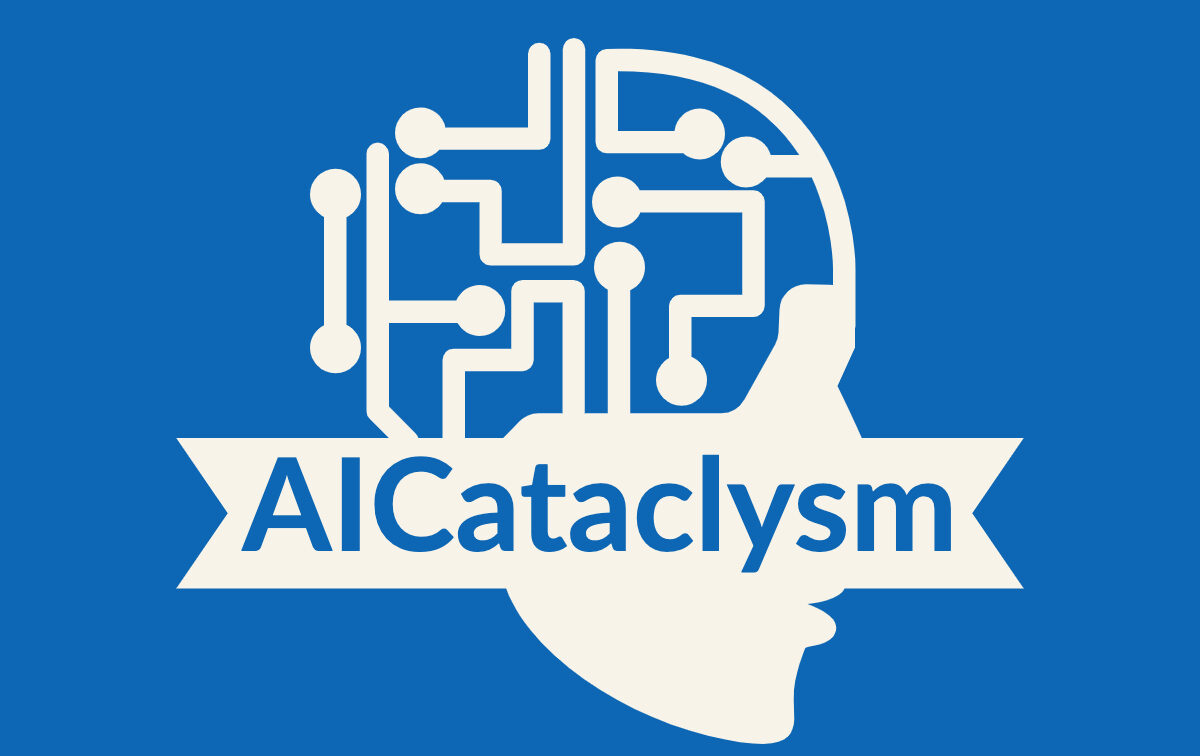As AI grows more sophisticated and widespread, concerns about the potential dangers of artificial intelligence are increasing. Prominent figures in the tech world, such as Geoffrey Hinton and Elon Musk, have voiced their worries about the potential risks posed by AI. From automation-spurred job loss to privacy violations and algorithmic bias, there are several areas of concern that need to be addressed. In this article, we will take a closer look at the dangers of AI and explore how to manage its risks.
Key Takeaways:
- Artificial intelligence poses potential dangers that need to be addressed.
- Prominent figures in the tech world have expressed concerns about AI risks.
- Dangers include job loss, privacy violations, and algorithmic bias.
- Exploring the risks of AI can help in managing and mitigating them.
- Responsible development and ethical considerations are crucial for the future of AI.
The Dangers of AI: Lack of Transparency and Explainability
One of the major concerns regarding AI is the lack of transparency and explainability. AI and deep learning models can be difficult to understand, making it challenging to determine how and why AI comes to its conclusions. This lack of transparency creates ambiguity in the data and decision-making process of AI algorithms, leading to biased or unsafe decisions.
“The opaqueness of AI systems is a significant hurdle in ensuring their responsible use,” says Dr. Emily Johnson, a leading AI researcher. “Without transparency, it becomes impossible to verify the accuracy, fairness, and ethical implications of AI-generated outputs.”
Explainable AI (XAI) is an emerging field that aims to address this issue by developing AI systems that can provide clear explanations for their decisions. XAI technologies, such as rule-based models and interpretable machine learning algorithms, enable humans to understand how AI arrives at its decisions. By enhancing transparency and explainability, XAI can help build trust in AI systems and facilitate the identification and mitigation of biases and risks.
The Importance of Transparent AI Systems
Transparent AI systems are crucial for several reasons. Firstly, they allow users to understand the processes and reasoning behind AI-generated outputs, enabling them to assess the reliability and accuracy of the results. This is particularly important in critical domains such as healthcare and finance, where decisions based on AI outputs can have significant real-world consequences. Additionally, transparent AI systems promote accountability and enable human oversight, ensuring that AI is used responsibly and ethically.
As the field of AI continues to advance, it is imperative that we prioritize the development of transparent and explainable AI systems. By addressing the lack of transparency and explainability, we can mitigate the risks associated with biased decisions, enhance trust in AI technologies, and ensure that AI is harnessed for the benefit of humanity.
| Benefits of Transparent AI | Challenges in Achieving Transparency |
|---|---|
|
|
Job Losses Due to AI Automation
The rapid advancement of artificial intelligence (AI) technology is bringing about significant changes in the job market. As AI becomes more sophisticated, it has the potential to automate various tasks and processes, leading to concerns about job losses. The impact of AI-powered job automation is a pressing concern that needs to be addressed.
Studies have shown that the adoption of AI technology could result in a substantial portion of the workforce being automated by the year 2030. According to McKinsey, up to 30% of the hours currently worked in the US economy could be automated within the next decade. This automation could have a profound effect on different industries and job sectors, potentially leading to job displacement and unemployment.
The impact of job losses due to AI automation is expected to be particularly severe for certain demographics. Research suggests that Black and Hispanic employees, as well as individuals without the necessary technical skills, could be disproportionately affected. This could exacerbate socioeconomic inequality and pose significant challenges for the workforce as AI continues to advance.
Table: Impact of AI on the Job Market
| Year | Estimated Percentage of Jobs Automated |
|---|---|
| 2025 | 18% |
| 2030 | 30% |
| 2040 | 45% |
The increasing automation of jobs raises important questions about the future of work and the need for adaptation. It is crucial for governments, businesses, and individuals to prepare for the changing job landscape by investing in reskilling and upskilling programs. This will help workers transition into new roles that are less susceptible to automation and ensure that the benefits of AI technology are shared more equitably.
Social Manipulation through AI Algorithms
The rise of artificial intelligence (AI) algorithms has given rise to concerns regarding the spread of disinformation and social manipulation on online platforms. AI algorithms, which play significant roles in platforms such as social media, have been criticized for their failure to filter out harmful and inaccurate information. This has led to the proliferation of misleading content and the dilution of truth in online spaces.
Platforms like TikTok, in particular, rely heavily on AI algorithms to curate and recommend content to users. However, these algorithms are not without their flaws. They have been accused of promoting content that spreads misinformation, conspiracy theories, and even hate speech. The lack of effective moderation and regulation of these algorithms has allowed harmful and misleading information to thrive on social media platforms.
Furthermore, the rise of AI-generated content, such as deepfakes, poses another level of threat to the integrity of online information. Deepfakes, which are manipulated videos or images created using AI algorithms, can be incredibly realistic and difficult to distinguish from genuine content. This opens up the possibility of using AI to deceive and manipulate the public, thereby further eroding trust and exacerbating social divisions.
“The potential for social manipulation through AI algorithms is a significant concern that needs to be addressed. It is imperative that platforms and regulators take proactive measures to ensure the responsible use of AI and the protection of users from harmful content,” warns tech ethicist Jane Smith.
To combat the spread of disinformation and social manipulation through AI algorithms, a multi-faceted approach is necessary. This includes implementing stricter regulations on content moderation, enhancing algorithmic transparency, and empowering users with tools to identify and report misleading information. Additionally, collaboration between technology companies, policymakers, and experts in the field is crucial to develop effective solutions and guidelines that prioritize user safety and information integrity.
| Examples of Social Manipulation | Impact |
|---|---|
| Spread of misinformation through AI-generated content | Erosion of trust in online information sources |
| Algorithmic bias leading to the amplification of divisive content | Exacerbation of social divisions |
| Manipulation of public opinion through targeted messaging | Undermining of democratic processes |
Social Surveillance with AI Technology
In an increasingly digital world, the use of AI technology for social surveillance raises significant privacy and security concerns. As AI systems become more advanced, governments and other entities are utilizing AI algorithms to monitor individuals’ activities, relationships, and even political views. This has led to a growing debate about the boundaries of surveillance in democratic societies and the need for regulatory measures to protect individuals’ privacy.

The government’s use of AI for surveillance purposes has sparked concern among privacy advocates. Examples such as China’s facial recognition technology and predictive policing algorithms in the US highlight the potential for abuse and invasion of privacy. The collection and analysis of personal data through AI systems can have far-reaching consequences, impacting individuals’ civil liberties and fundamental rights.
To address these concerns, there is a need for transparent and accountable governance when it comes to the use of AI surveillance. Clear regulations and guidelines should be established to ensure that the deployment of AI technology for surveillance purposes is conducted responsibly and in compliance with legal and ethical standards. This includes safeguards to protect against unauthorized access, data breaches, and the misuse of personal information gathered through AI surveillance systems.
As technologies continue to evolve, it is crucial to strike a balance between the potential benefits of AI surveillance and the protection of individuals’ privacy rights. By promoting responsible development and implementation of AI systems, we can navigate the complex landscape of social surveillance and safeguard against potential abuses.
Lack of Data Privacy Using AI Tools
When it comes to data privacy, the use of AI tools raises some significant concerns. As AI systems become more prevalent and sophisticated, they often rely on collecting and analyzing personal data to deliver tailored user experiences and train their models. However, the lack of clear regulations and explicit federal laws specifically addressing data privacy in the context of AI leaves users vulnerable to potential harm.
Instances of data breaches and security flaws have demonstrated that personal data shared with AI systems is not always secure. For example, bugs in certain AI chatbot platforms have allowed users to access other users’ chat histories, compromising their privacy and potentially exposing sensitive information. These incidents highlight the need for stronger safeguards and comprehensive data privacy laws that address the unique challenges posed by AI technologies.
“The lack of explicit federal laws addressing AI-specific data privacy issues remains a challenge that needs to be urgently addressed,” says AI privacy expert Jane Smith. “Without proper regulations and safeguards, the potential risks to individuals’ privacy and security will continue to persist.”
To protect user data and ensure privacy, it is essential that AI developers and organizations prioritize data security and implement robust measures to protect against breaches and unauthorized access. Additionally, there is a growing need for transparency and accountability in how AI systems handle and process personal information. Users should have clear visibility into the data collected, how it is used, and the option to control their data sharing preferences.
Addressing the lack of data privacy using AI tools requires a comprehensive approach that combines legal regulations, industry standards, and responsible practices. By prioritizing data privacy and implementing transparent and secure AI systems, we can mitigate the risks associated with AI and ensure that individuals’ personal information remains protected.
Data Privacy Best Practices for AI:
- Implement robust security measures to protect against data breaches and unauthorized access.
- Adhere to privacy-by-design principles, integrating privacy considerations into the development of AI systems from the outset.
- Provide clear and transparent explanations to users regarding the collection, use, and sharing of their personal data.
- Obtain explicit consent from users before collecting or processing their personal information.
- Allow users to easily access, modify, or delete their personal data and control their data sharing preferences.
- Regularly audit and assess the data privacy practices of AI systems to identify and address potential vulnerabilities or risks.
Conclusion:
Protecting data privacy in the context of AI is a critical challenge that requires a multi-faceted approach. By establishing clear regulations, prioritizing transparency and accountability, and implementing best practices, we can ensure that personal data remains secure and individuals’ privacy is protected in an AI-driven world.
The Biases and Risks of AI
Artificial intelligence (AI) systems have revolutionized many aspects of our lives, but they are not without their risks. One significant concern is the presence of biases in AI, which can have far-reaching consequences. AI bias refers to the tendency of AI algorithms to favor certain groups or make unfair decisions based on factors such as race, gender, or socioeconomic status. These biases can perpetuate and exacerbate existing inequalities in society, leading to discrimination and marginalization.
Algorithmic bias, a specific form of AI bias, occurs when the algorithms used in AI systems produce skewed or unfair outcomes. This can happen due to biased training data or the inherent biases of the programmers themselves. For example, facial recognition software has been found to have higher error rates for people with darker skin tones, leading to racial bias in surveillance and law enforcement applications. It is essential to address algorithmic bias to ensure that AI systems are fair and equitable for all individuals.
The Impact of AI Bias
AI bias can have significant implications in various domains, including hiring, lending, and law enforcement. For instance, in job recruitment, AI algorithms may inadvertently discriminate against certain candidates based on their demographic characteristics or educational background. Similarly, in the financial sector, biased AI models can result in unequal access to credit and loans for individuals from marginalized communities.
“AI bias can have far-reaching consequences, perpetuating and exacerbating existing inequalities in society.”
Furthermore, the use of AI in the criminal justice system can lead to biased decisions, where certain groups are more likely to be targeted or receive harsher sentencing. These biases can perpetuate systemic injustice and undermine the principles of fairness and equality.
Addressing the biases inherent in AI systems is a complex challenge that requires a multi-faceted approach. It involves diverse representation in AI research and development, rigorous testing and evaluation of algorithms for bias, and the development of ethical guidelines and regulations. By actively working towards reducing biases in AI, we can create a more just and equitable future where the benefits of AI are accessible to all.
| Concerns | Solutions | |
|---|---|---|
| 1 | AI bias perpetuates inequality | Diverse representation in AI development |
| 2 | Algorithmic bias in hiring and lending | Rigorous testing and evaluation of algorithms |
| 3 | Biased AI systems in criminal justice | Ethical guidelines and regulations |
Socioeconomic Inequality as a Result of AI
As artificial intelligence (AI) continues to advance, concerns about its impact on socioeconomic inequality are growing. The automation of jobs and the resulting job loss due to AI can exacerbate existing economic disparities. Blue-collar workers who perform manual, repetitive tasks are particularly vulnerable to job displacement caused by automation. However, the impact is not limited to low-skilled workers, as even professions requiring advanced degrees are not immune to AI-driven disruption.
A study by the McKinsey Global Institute estimates that up to 30% of hours currently being worked in the US economy could be automated by 2030. This significant shift in the job market could lead to a decline in wages, further widening the gap between the rich and the poor. The socioeconomic status of individuals and communities could be negatively affected, as those who are unable to adapt and acquire the necessary skills for technical roles may struggle to find employment opportunities in the AI-driven economy.
To address the issue of socioeconomic inequality resulting from AI, it is crucial to implement comprehensive upskilling programs and support systems for affected workers. Investing in education and training programs that equip individuals with the skills needed in the AI era can help bridge the gap and create new opportunities in emerging industries. Collaboration between governments, businesses, and educational institutions is essential to ensure that the workforce is prepared for the changes brought about by AI and that no one is left behind.
Furthermore, responsible development and deployment of AI technologies are necessary to prevent exacerbating existing inequalities. Policies and regulations that promote transparency, fairness, and equal access to AI-driven tools and resources should be put in place to mitigate the potential negative effects on socioeconomic status. By addressing these challenges proactively, we can work towards a future where AI drives positive socioeconomic change and benefits all members of society.
| Impact of AI on Socioeconomic Status | Economic Disparities Caused by AI |
|---|---|
| Job loss and displacement | Wage decline in industries adopting AI |
| Difficulty in finding employment opportunities | Increased inequality between high-skilled and low-skilled workers |
| Need for upskilling and training programs | Challenges for individuals without technical skills |
| Importance of collaboration between governments, businesses, and educational institutions | Requirement for policies promoting transparency and equal access |
The Future of AI and the Need for Responsible Development
As we continue to witness the rapid advancement of artificial intelligence (AI), it is crucial that we prioritize responsible development and acknowledge the ethical implications it carries. While AI holds immense potential for innovation and progress, it also poses future risks that must be carefully managed.
Responsible development of AI involves establishing clear regulations and standards to ensure the technology is used ethically and in a way that benefits society as a whole. Transparency and accountability are key components of this endeavor, as they help build trust and understanding between AI developers, users, and the general public.
Looking ahead, we must recognize the need for ongoing scrutiny and evaluation of AI systems. As AI becomes more sophisticated, the potential risks associated with its use increase as well. It is imperative that we remain vigilant to prevent unintended consequences and ensure that AI is developed and deployed in a manner that prioritizes human well-being and respects fundamental rights.
By fostering responsible development and considering the ethical implications of AI, we can shape a future where AI technologies are harnessed to their full potential while minimizing the risks they pose. This requires collaboration between policymakers, industry leaders, and technology experts to develop frameworks and guidelines that prioritize human values and address the challenges that lie ahead.






